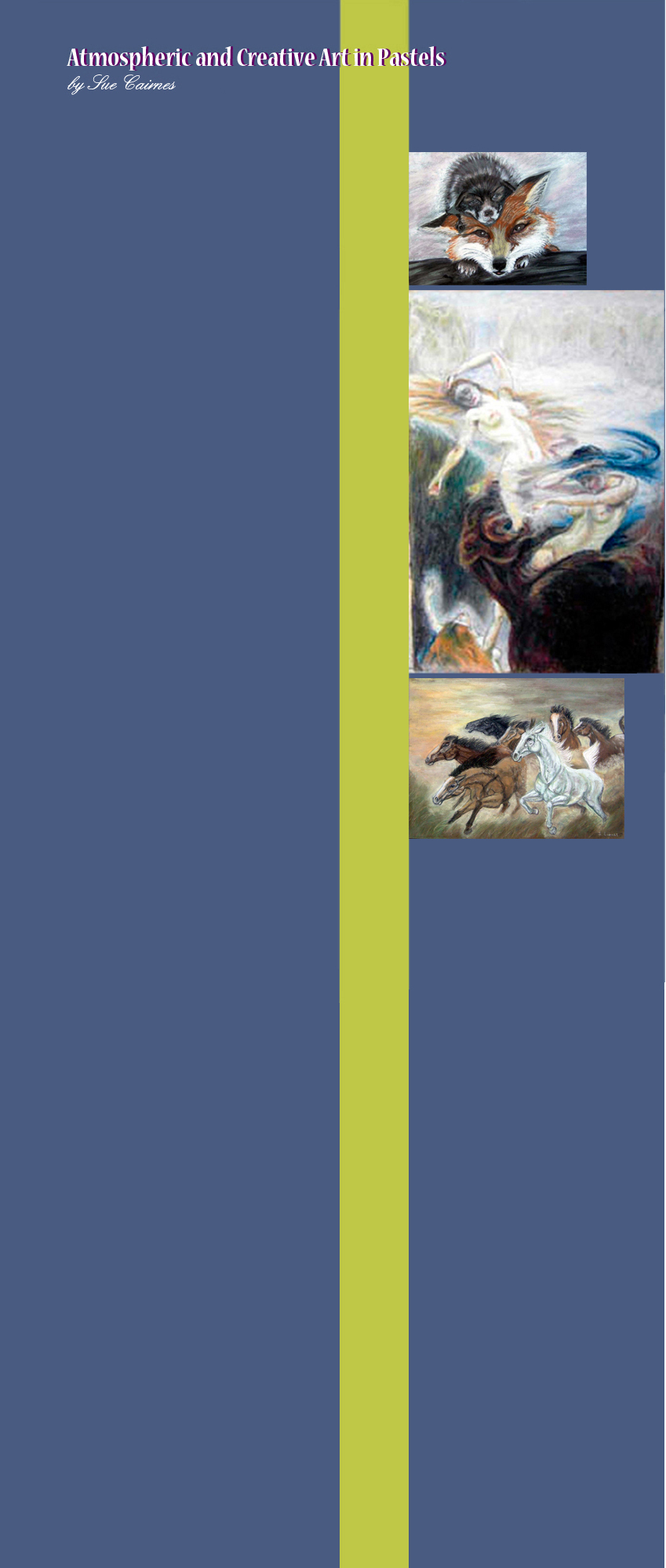
Order form
She is a Winner
Workshops and Tutorials
About Pastels
Pastel Subjects
Aircraft
Animals
Dancers and Nudes
Mythical
People and Places
Commissions
Latest work
Cards and Prints
Guidelines
ABOUT PASTELS
The term Pastel comes from the word pastello, meaning paste, which is essentially what pastels are. They are made from a paste formed by mixing finely ground pigments with precipitated chalk or clay, plus a binder, such as gum tragacanth. The paste is then rolled into sticks and left to dry. Different tints and shades for each colour are created by varying amount of base colour and white pigment used in the formulation.
Like coloured pencils, there is no mixing, thinning or particular preparation necessary with pastels, making them a very direct medium to use. It is a particularly good medium to use if you want to develop a more spontaneous, expressive style of work.
Pastels can be utilised on many varied types of paper and card. Including mountboard, watercolour paper and special pastel paper. Smooth papers are best for portraiture, and for linear work and sketching. However most Pastellists prefer to work on a rough grained surface, as this allows a build up of the medium for more textual results.